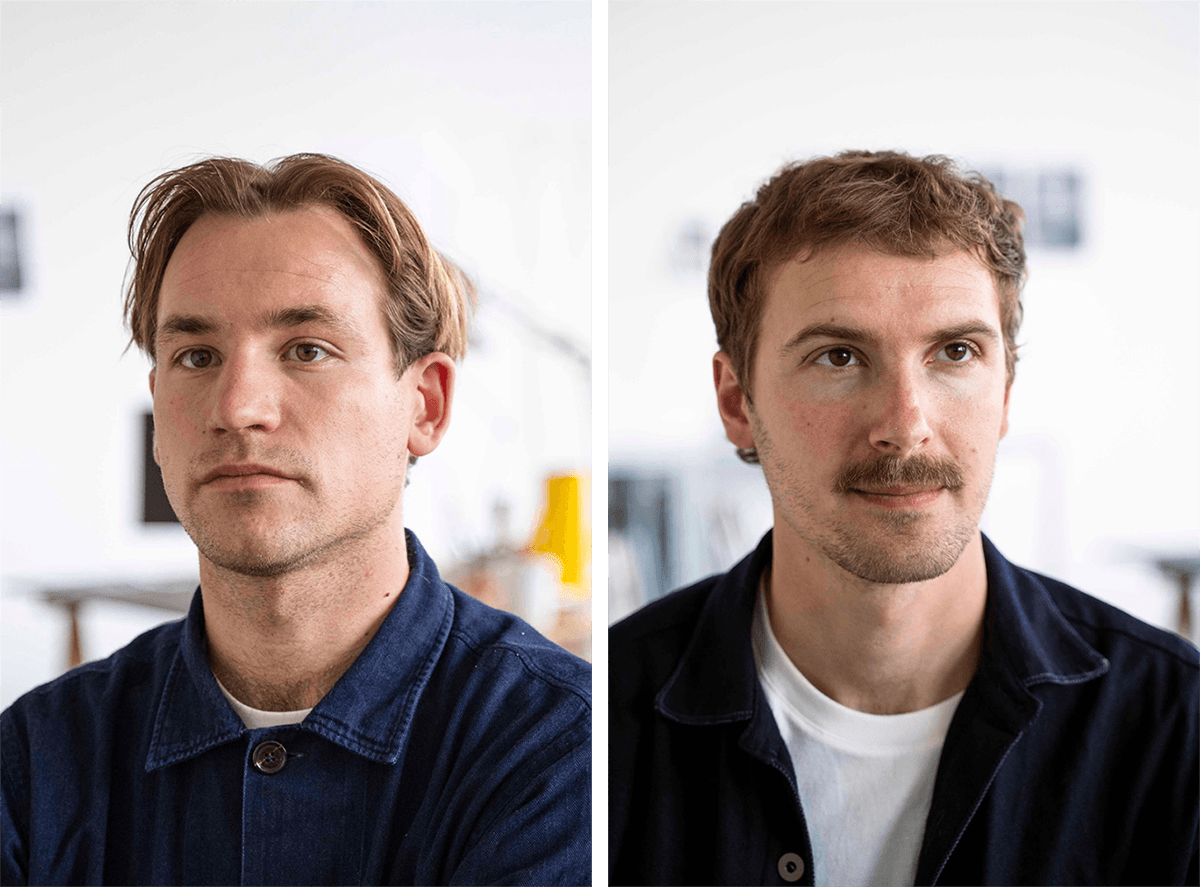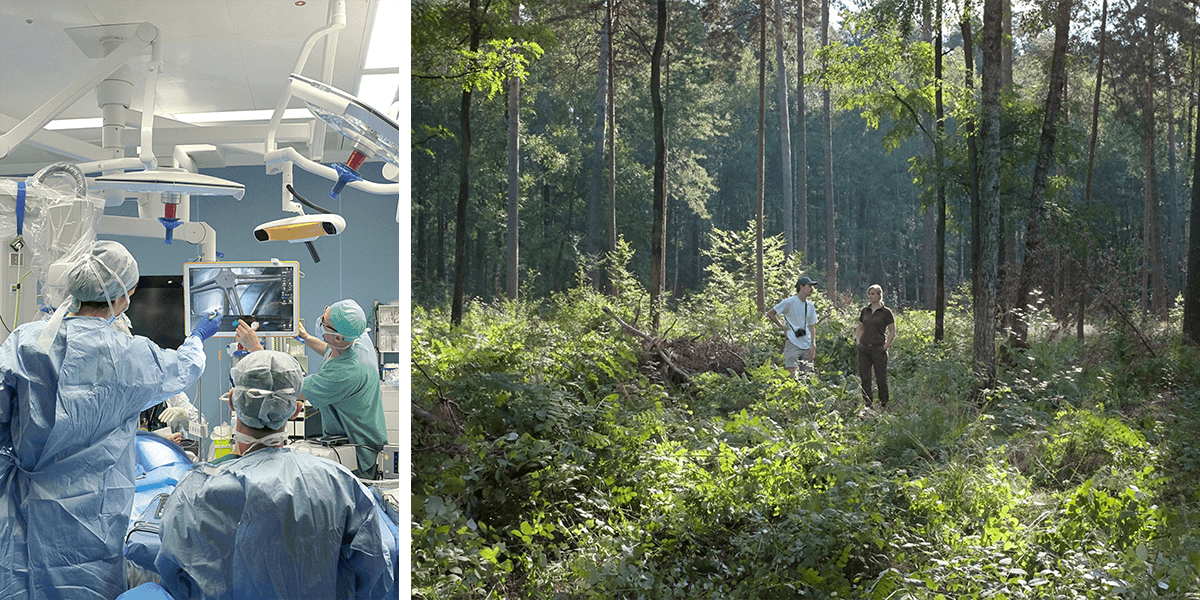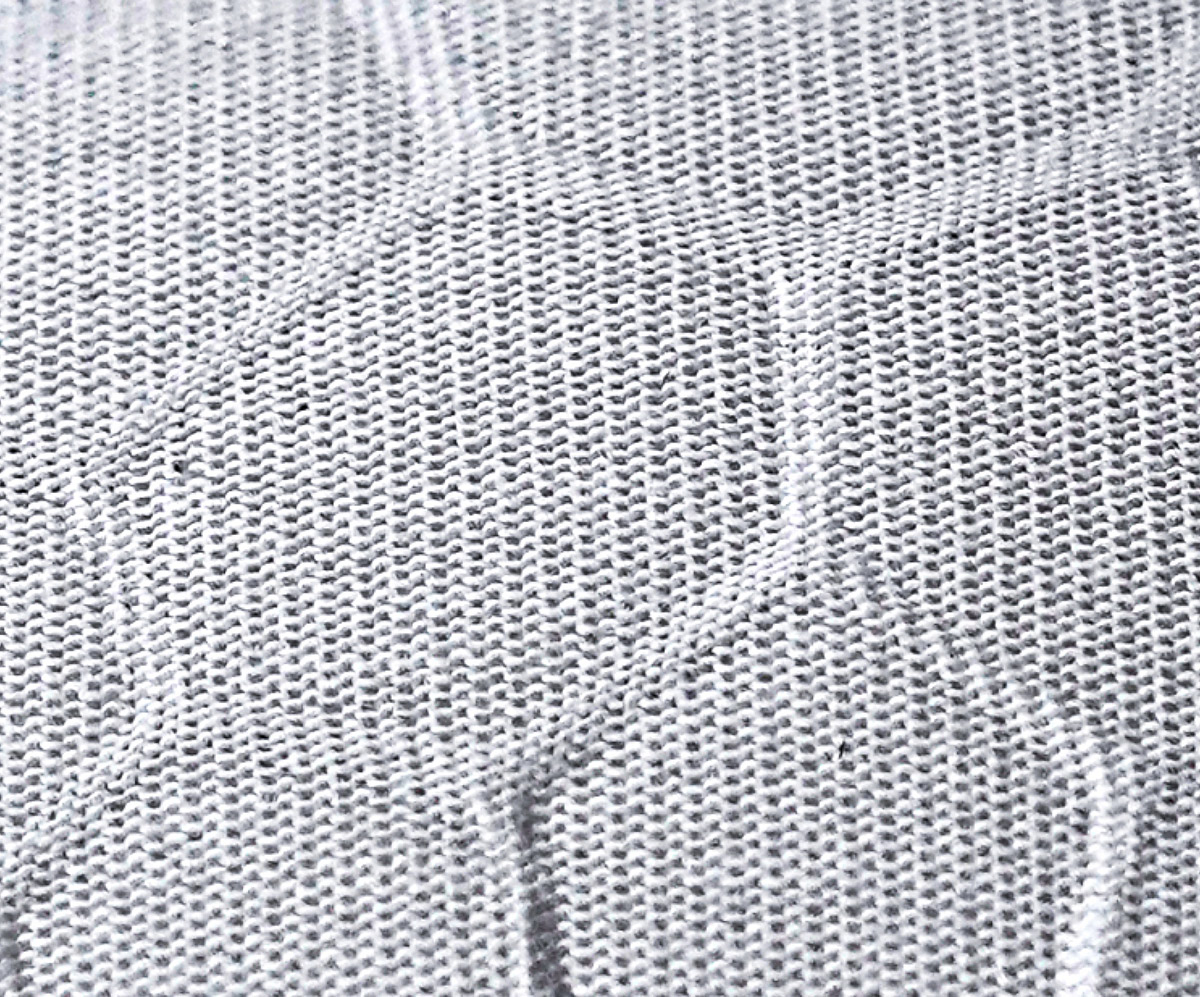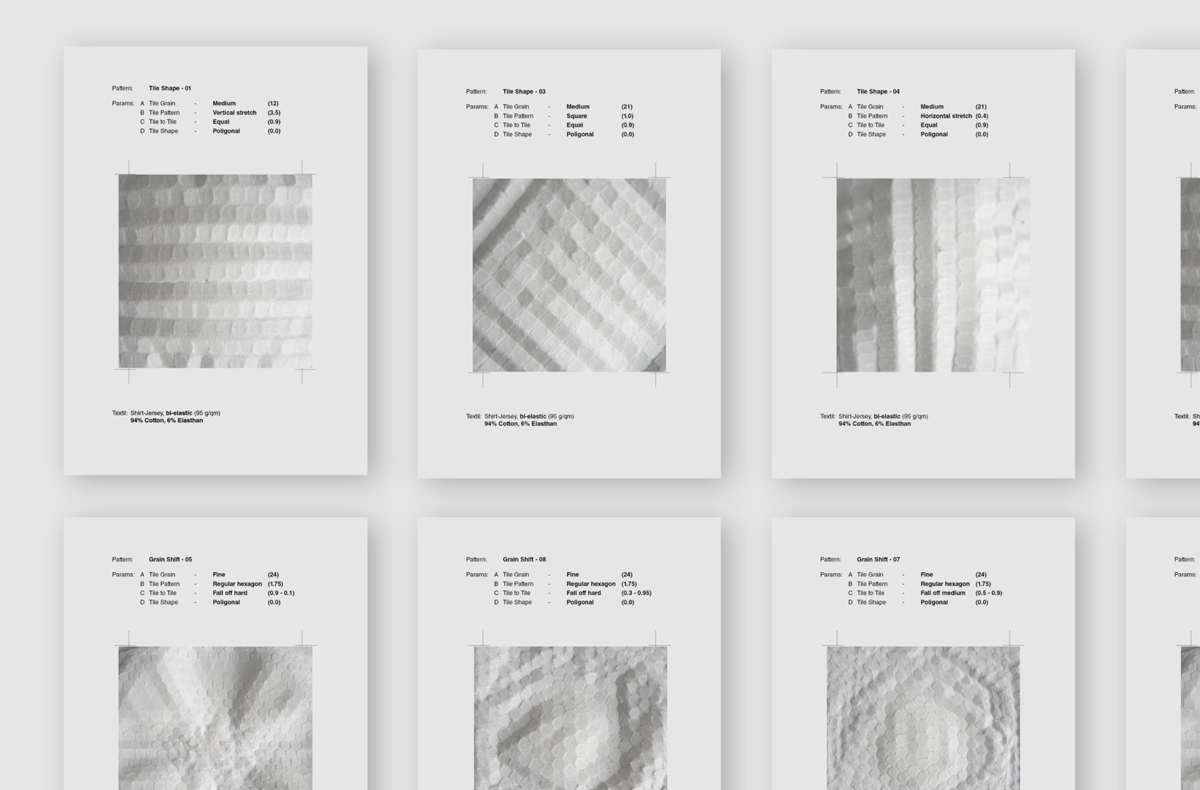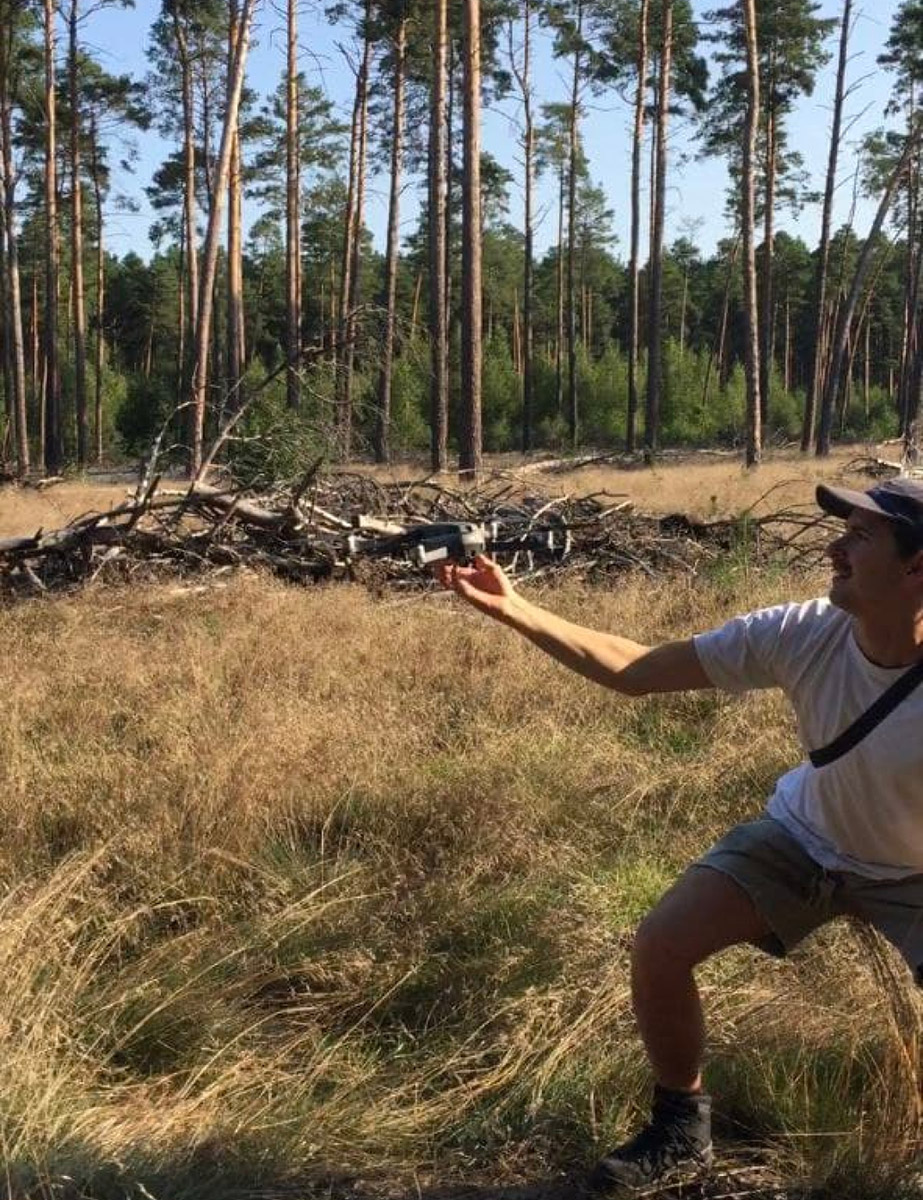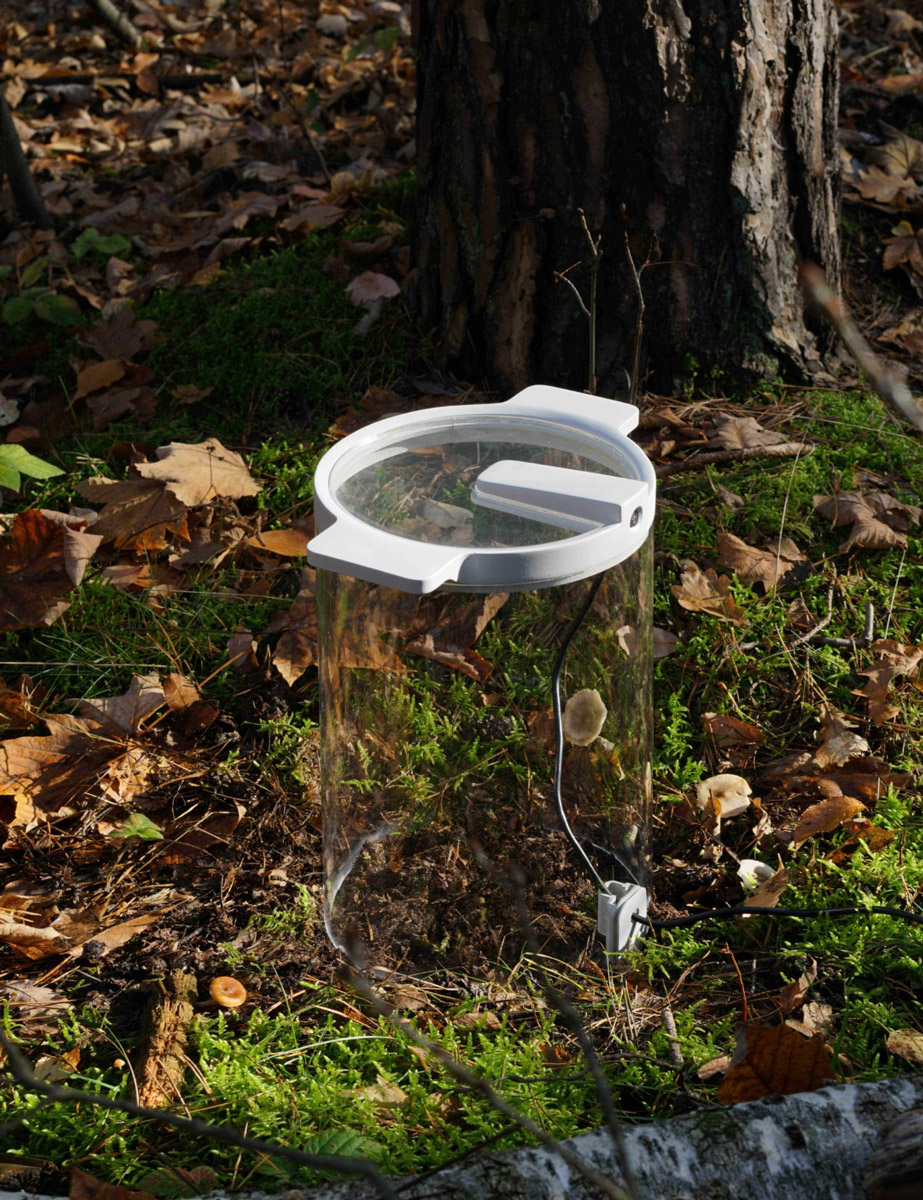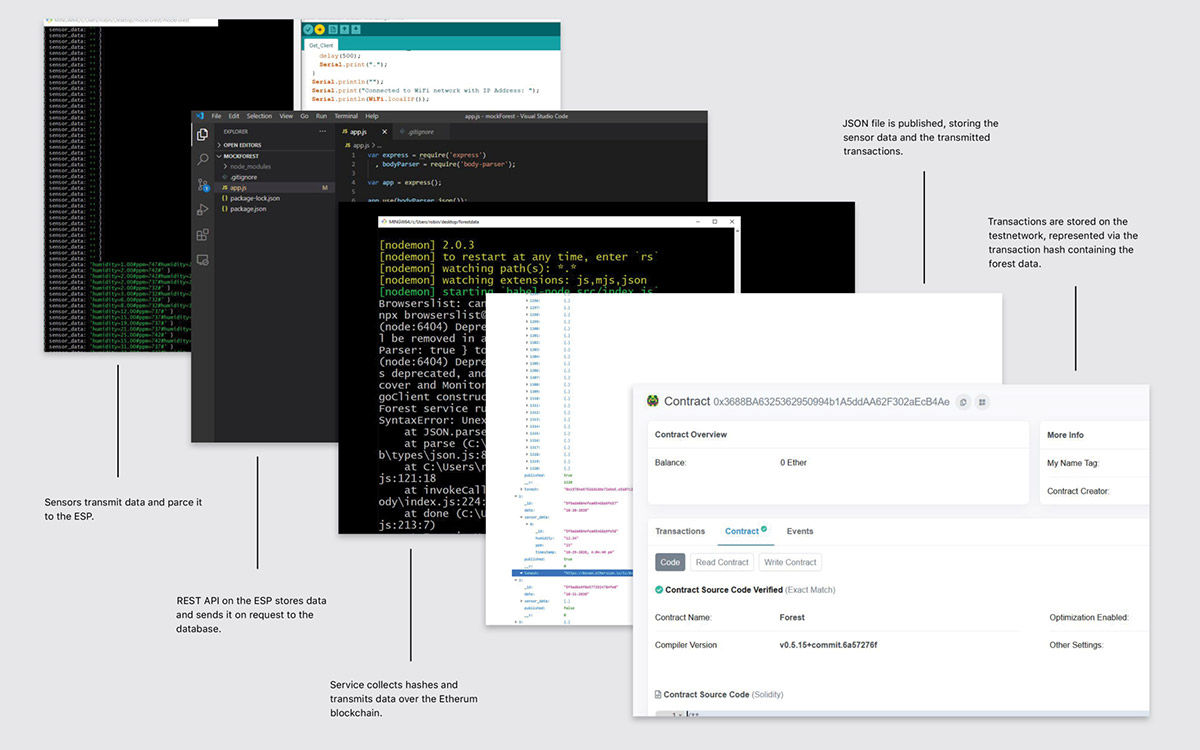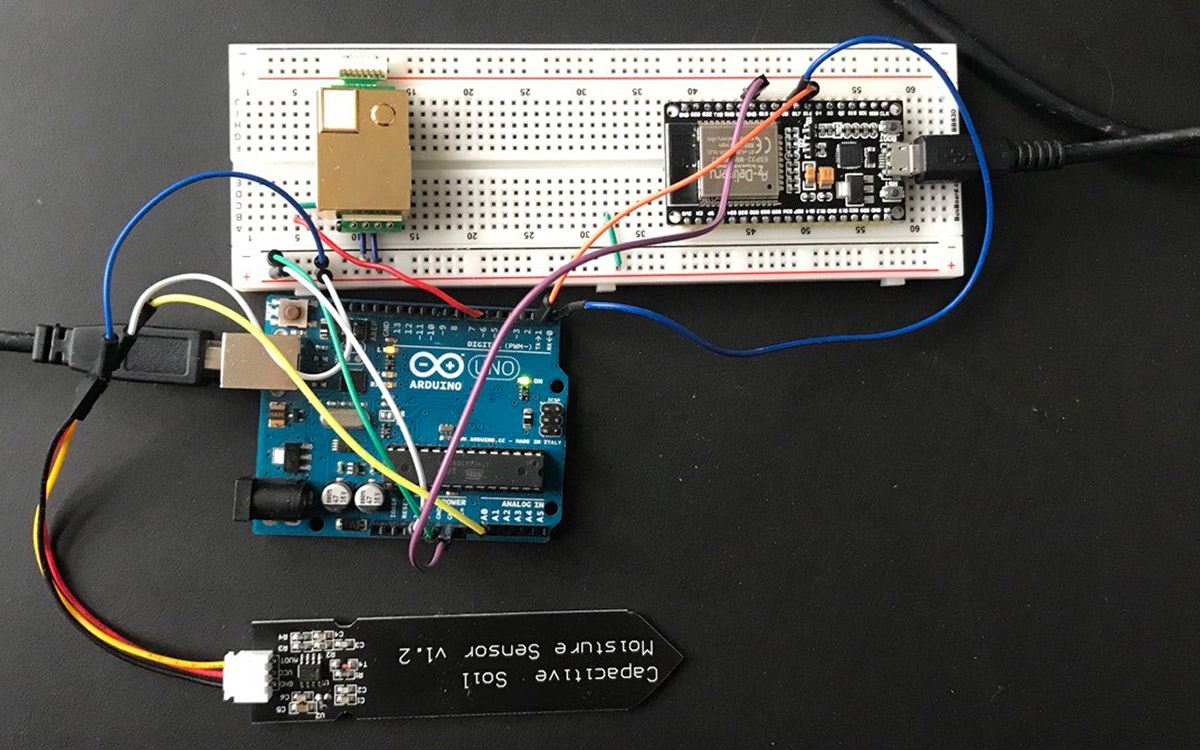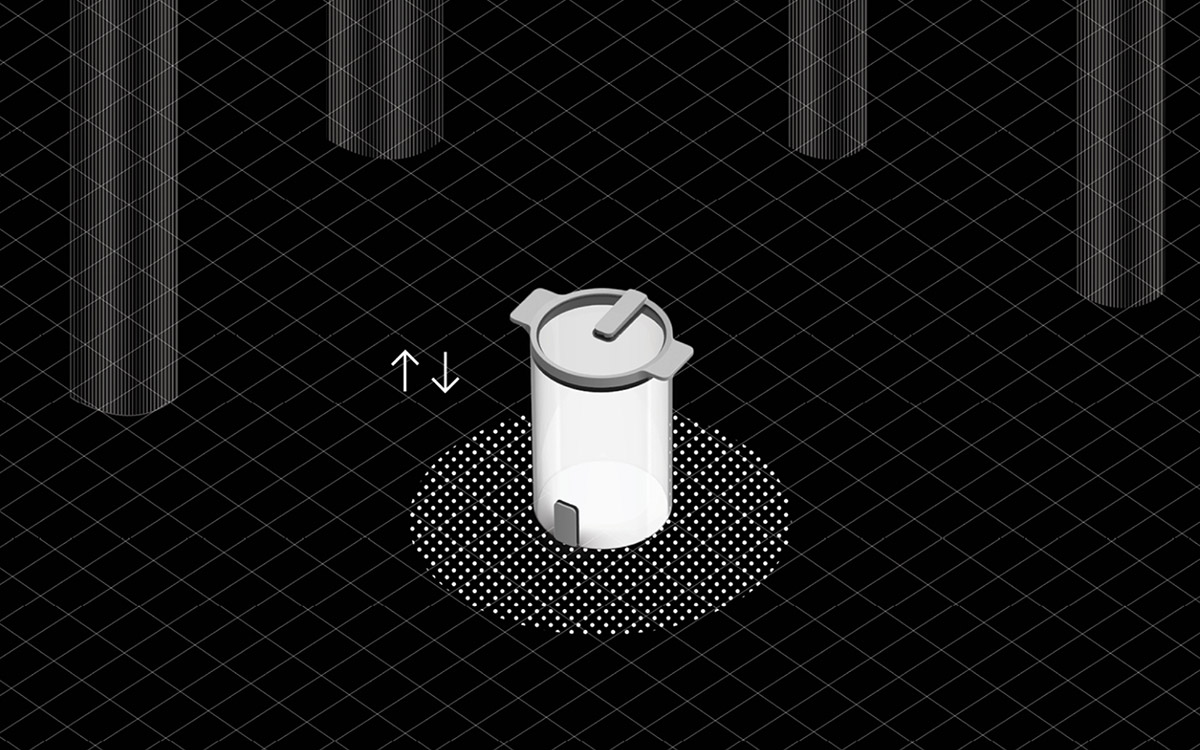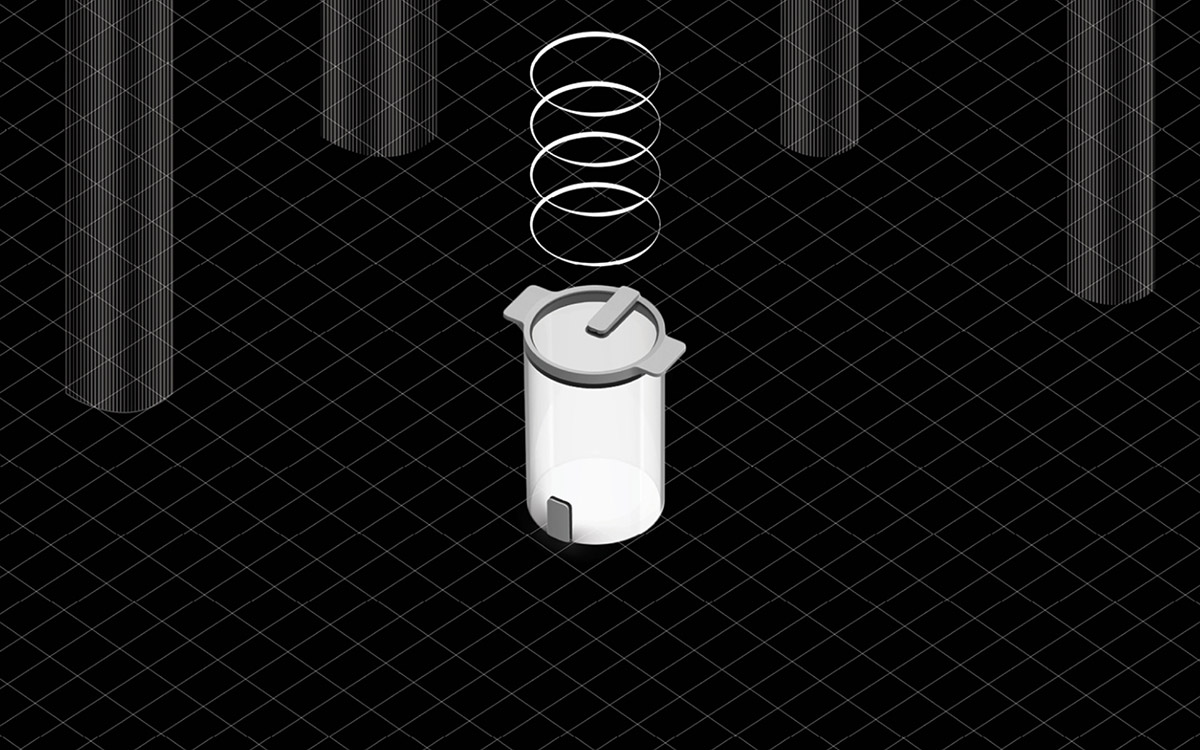21/032
WINT
Design Lab
Berlin
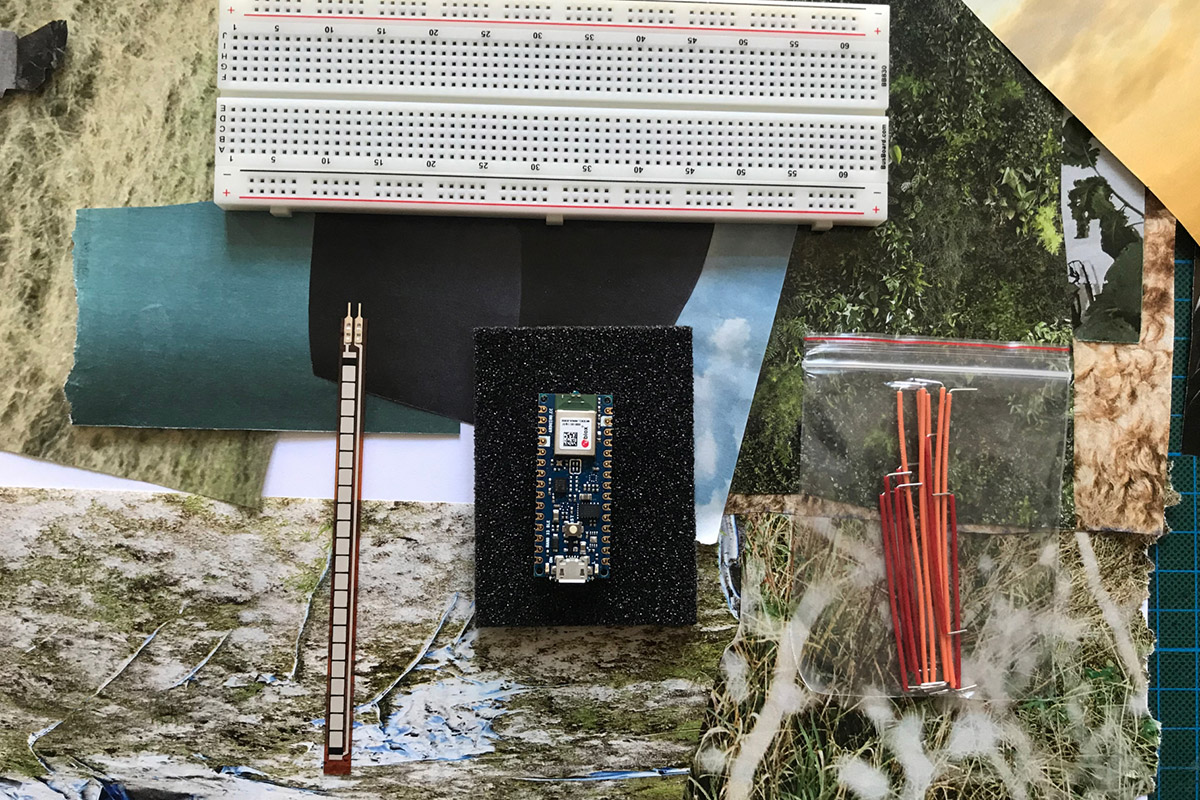
«As designers we have to shift the reasoning of our practice from convenience to impact.»
«As designers we have to shift the reasoning of our practice from convenience to impact.»
«As designers we have to shift the reasoning of our practice from convenience to impact.»
«As designers we have to shift the reasoning of our practice from convenience to impact.»
«As designers we have to shift the reasoning of our practice from convenience to impact.»
Please, introduce yourself and your studio…
WINT is a Berlin-based Design Lab exploring ecological and technological responsibilities through Design practice. The Lab is currently led by Felix Rasehorn and Robin Hoske. We believe in small utopias and ambitious concepts and therefore created an infrastructure that is geared towards interdisciplinary exchange and collaboration with other knowledge domains such as Biology, Material Science, Software Development and others. These collaborations enable us to consciously, technically and economically co-develop projects that pave the way into preferable futures.
Felix Rasehorn and Robin Hoske – © WINT Design Lab
How did you find your way into the field of Design?
Robin Hoske (RH): I come from a family of entrepreneurs and artists – my mother is a fashion designer, my father a consultant –, and I guess a little bit of both worlds continue in my work. Design and its methods have always fascinated me because it offers the possibility to transform abstract visions into concrete scenarios. I think that is very close to my character: dreaming, discussing and testing, which is why I ended up in design.
I began my studies at the at weißensee academy for art and design in Berlin, went to study abroad via the Erasmus exchange program to l'ecal in Lausanne and worked for seven months as an assistant at Nicholai Wiig Hansen and Raawii studio in Copenhagen. Working in the world of classical product design was an exciting and educational experience, but also changed my attitude towards this practice. I realized that my interests lie more in the field of scientific, interdisciplinary, conceptual and system-oriented design.
Felix Rasenhorn (FR): To me, it was always a question of why things are like they are: The man-made solutions that surround, aid and augment civilizations. Secondly, I remember having this strong interest in other disciplines especially biology and art. I was searching for possibilities to channel all my interests into one practice. I saw how design can operate transversally between disciplines and started to feel ensured to come closer to my initial goal – questioning why things are like they are to suggest alternatives.
Like Robin I started my education at at Weißensee academy, after two years I went to Istanbul for an exchange semester at Mimar Sinan Universitesi, then I started interning for Studio Daniel Rybakken in Gothenburg. The time abroad and the connection with Daniel were essentially helping me to understand how I want to practice design.
What are your experiences founding and leading your own design studio?
We founded WINT in 2019 as a team of three designers (Robin Hoske, Leon Laskowski and Felix Rasehorn). We knew each other from the academy, where we started collaborating in 2016. With WINT we wanted to build a network of professionals to bridge disciplinary silos. The goal was to be able to adapt as a network being able to tackle more complex challenging tasks that needed inter- or cross-disciplinary approaches. In the beginning, it was challenging to acquire clients and find collaborators that understood our specific qualities, ideas and vision.
But we were stubborn and euphoric enough to stick to our original vision. And now about three years later we are developing projects from findings in biochemistry towards material applications. We collaborate on eye level with scientists, developers and artists developing projects that we believe in.
What comes to your mind, when you think about your diploma projects?
FR: The time at Weißensee academy was an extremely explorative phase. In my BA thesis, I was investigating the morphological movements of plants during their growth process. I was therefore exchanging and collaborating with material scientists from MPI for colloids and interfaces in Potsdam. Later in my MA thesis, this method was already more established and my topic was much more focused. I was collaborating with researchers from the Charité as part of the Cluster Matters of Activity. My supervising professors Carola Zwick and Jörg Petruschat set me in contact with the Image Guidance Lab situated in the Neurosurgical department of Charité Berlin.
Within this context, I was developing alternative interaction concepts for the domain of neurosurgical planning. Now I work part-time as a research assistant at the Cluster Matters of Activity (HU Berlin) and currently follow my PhD thesis in the framework of the PEP (Program Entwurfsbasierte Promotion) at TU Berlin. All of this somehow interweaves with founding WINT and with how we choose and develop projects, source collaborators and tackle problems.
RH: For me, my Master’s thesis has been an opportunity for trying new things, exploring concepts and technologies that I haven’t been in touch with before. In my thesis, BIONT, I worked with a local forestry to find new ownership models helping forestry companies to practice sustainable forest management and at the same time providing digital ownership of ecological factors to citizens.
The project made me realize that the implementation of new ideas depends on the systematics, the logic that generates them. To find solutions that serve, for example, an ecosystem like the forest and not just forest owners or forestries, it is questionable whether a human-centred approach can ever lead to planetarily relevant solutions. Designing anything that leads to a relevant difference in our current cultural and economic situation, means you have to change the basic strategy of designing the framework.I would say the thesis contributed to not only the topics and discourse we work in but also the methodology and workflow for future work.
What does your desk/working space look like at the moment?
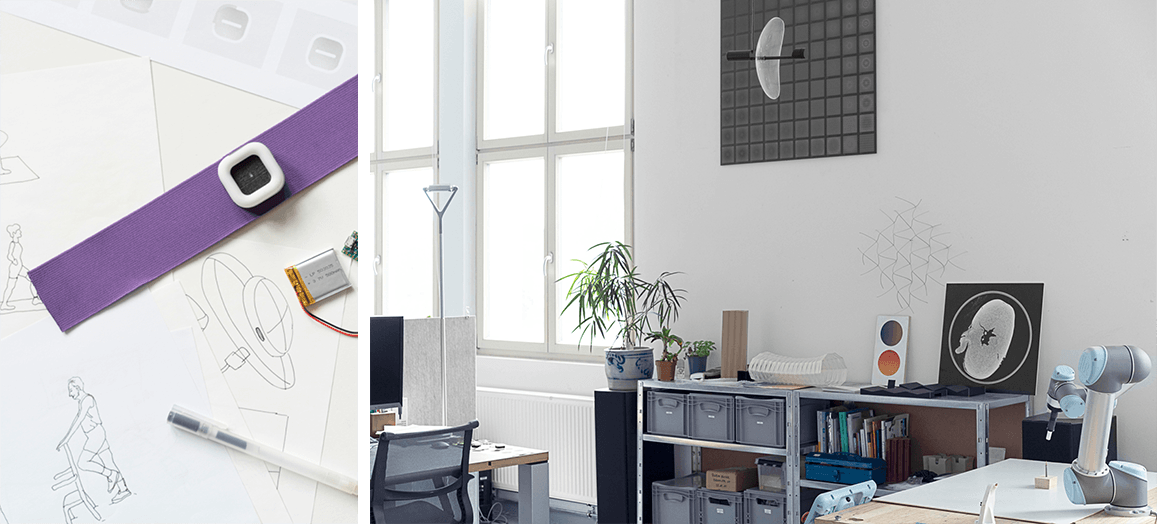
WINT – Working Space
How do you define the following words and what do they mean to you?
Prototyping: We tend to understand most of our practice as prototyping. Prototypes are realistic prologues of a future reality constructed in a protected environment but aimed for our complex world. Most prototypes are created to be tested to generate a better understanding of their real-world requirements. Others are there to communicate ideas, possibilities and hopes. Some are there to be neglected and to be reminded of what would not be the goal. In any case, a prototype can give answers and helps to reach the next steps, only through this process of iteration a reasonable product can come to life.
Visions: If an entity can imagine and communicate how something should be developed to achieve a preferred future, a vision is created. Visions are an essential part of the design. As designers, we are capable of communicating visions in a tangible and experienceable way. A shared vision can help collaborators to go through times of uncertainty and trouble. This builds a great foundation for exchange and is necessary to achieve a shared goal.
Circular: Often recycling and circular economy are misunderstood as synonyms. Recycling is basically the lowest form of circular economy, meaning that objects are reduced to the value of their inherent materials, neglecting energy consumption, pollution and the value of the production chain. The circular economy is really about maintaining value in the highest possible value cycle, which means keeping a product in use, as long as possible then refurbishing it, and finally recycling it.

From Idea to Object: How would you describe your working process? What is your favorite design tool?
As we work in a variety of fields, we are relying on a broad base of tools to visualize, prototype or explain ideas. In some cases, we learn to use tools for dedicated projects, when we come to a point where it takes too much time to acquire new knowledge we love to work with specialists. In this spirit, we recently bought a UR5 Robotic arm for research purposes in the lab.
One “tool” that is present in all of these processes, is discussing in the team. We internally established an exchange that relies on productive criticism, in some cases that leads to heavy discussions but we are sure that these are needed to create meaningful projects. We are also including tools to guide and structure our discussions if necessary. Robin was recently involved in further development of the Planetary Design Circle in collaboration with the Fraunhofer IZM Eco Design Team, a thinking tool that helps to incorporate planetary needs into business and design decisions.

WINT – Process
What essential actions do designers need to take now regarding a more sustainable future for everyone? From your perspective: What are the (political, legislative) influencing factors that matter most?
Design practice is still dominated by the idea of designing for the user, which puts human desires at the center of the design purpose. But to truly design for a system, we need alternatives. Fortunately, new themes and theories are slowly emerging that take an interspecific approach. For example, researchers at Het Nieuwe Instituut in Rotterdam have developed the zoöp-concept, a legal framework that transforms ecological areas into legal subjects. The concept is based on two questions, first, how humans and non-humans can cooperate based on equality. And second, can this equality be legally implemented in a way that leads to ecological regeneration?
This approach demonstrates that design is an opportunity for defining alternative futures and enables people to participate through new tools. Designers must recognize that they can bring their skills and passion to the climate movement and shape a sustainable future. Environmental factors can also be KPI’s (Key-Performance-Indicators), there is enough data to calculate the monthly impact of environmental and social improvements to generate economic models. As designers we therefore need to shift the reasoning of our practice from convenience to impact. To achieve this, we will need to gain more knowledge about the systems and stakeholders we want to address or formulate solutions for.
If there were one skill you could recommend to a young design student to focus on in depth at university: what would it be and why?
Interdisciplinarity. Get out of the design bubble and start to meet and discuss with experts that can help you to bring forward your ideas but also be helpful to them and their ideas. Most of the time your collaborators will have equally innovative and good ideas if you understand how to read them.
What person/collective or project do we need to look into right now?
State Studio Berlin has done a great job in connecting scientists, artists and designers, sadly they recently gave up their nice showroom in Kleistpark but they are moving towards digital and event-based formats.
For young designers in Berlin, check out the accelerator program Design Farm Berlin, you can apply with your project, idea or product to be funded for up to 12 months. Besides the financial support, a big network of professionals will help you to take the next steps with your project.
Everyone interested in new modes of cross-species collaboration read more about the Zoop Project and the Het Nieuwe Instituut or dive into the “Politics of Nature” by Bruno Latour. (Politics of Nature - How to bring the sciences into democracy, Date: 2004, Publisher: Harvard University Press)
Texts by Stefano Mancuso will change your understanding of plant organisms. (Trees - Bruce Albert, Francis Halle, Stefano Mancuso; Verlag: Fondation Cartier pour l'art contemporain, 5. September 2019, Englisch ISBN-13: 9782869251458)
Project 1 – Part 1
Tesselated Material Systems – Research towards designing surfaces with distinct kinematic properties
In biology, tessellation systems – surfaces composed of individual plates – occur across species. The morphological variations of such systems are so similar that formal principles can be identified. These principles can be transferred into computer-generated patterns to investigate their kinematic behavior. Most natural tessellation systems exhibit multifunctionality, as rigid plates interact with flexible, soft interfacing membrane. This leads to a complexity of properties that is difficult to simulate with computer-generated simulations.
To overcome limitations in modelling, the design of analogue prototypes has been investigated in this project. Mechanically rigid elements are bonded to pre-stretched textiles using 3D printing. The textile therein simulates the soft interfacing membrane between the hard plates as observed in natural systems. The textile absorbs the applied tension that arises due to the pre-stretching and transfers it to the entire system. The generated model and workflow can be used to explore the complexity of properties of natural tessellation systems while opening up new areas of application for Design and Architecture.
Image Description: Research embeded in the Cluster of Excellence “Matters of Activity”
Collaborators
Prof. Carola Zwick, Prof. Jörg Petruschat (weißensee KH Berlin)
Dr. Mason Dean (Max Planck Institute for colloids and interfaces)
Dr. John Nyakatura (HU Morphology)
TMS research group
Project 2
BIONT – a Currency for Ecological Regeneration
The aim of the BIONT concept is to find a new way of financing the sustainable and community ownership of local forests. By purchasing the BIONT token, citizens can acquire shares in the carbon capital of a forest instead of generating income through the purchase of timber. An independent system of forest sensors checks the condition of forest ecosystems through regular measurements and communicates this data back to the blockchain. In this way, ecological characteristics become part of an economic system that is dependent on environmental factors.
While common financing platforms for reforestation programs do not disclose their investment activities, this is an inevitable part of the blockchain in conjunction with forest sensing. It creates the necessary trust and a direct link between local forestry operations and the token owner. This opens up new opportunities for ecosystem financing. The BIONT token introduces a digital layer to forest ownership and makes ecological attributes permanently visible and tangible. Importantly, the token is funded by a community, from multiple individuals, and not just by a few, as in traditional forest ownership models. The token can reflect the total ecological capital that forests and other potential ecosystems feed into. Monitoring by the forest sensor helps to observe the areas in their regeneration process and to certify the results. The terms set by the token enforce longer-term investments and tie the token owners into a longer financial relationship with the ecosystem.

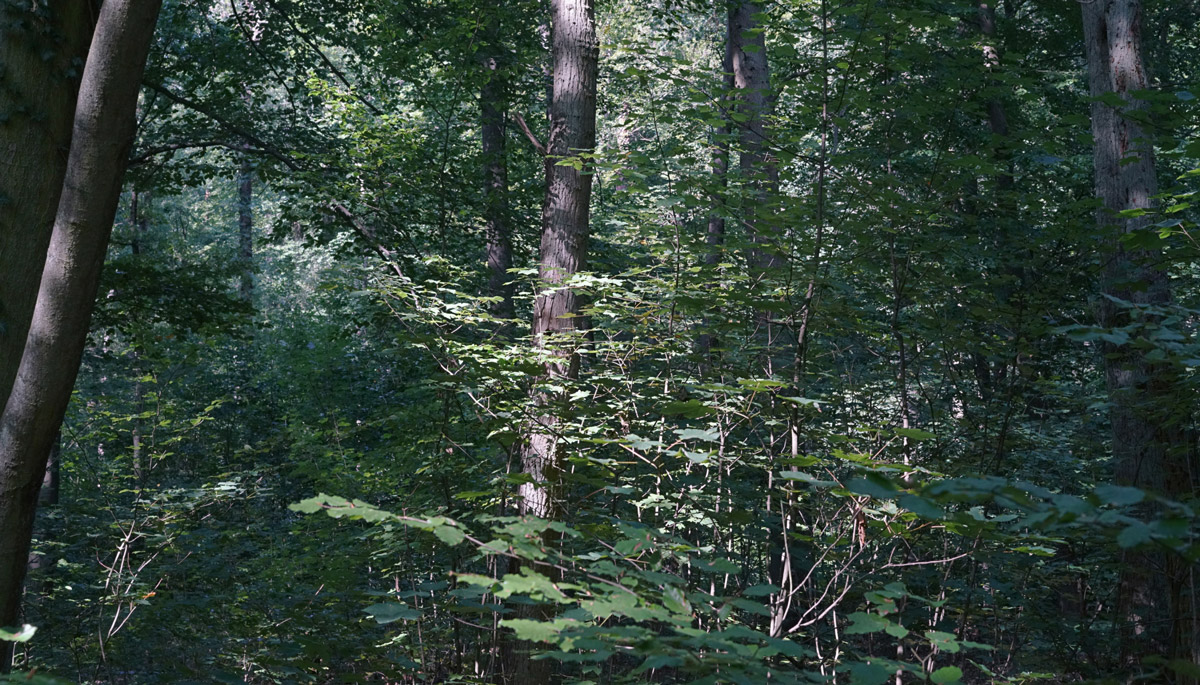
Collaborators
Stiftung August Bier
Code and Development by Manuel Polzhofer
Supervised by Prof. Carola Zwick, Prof. Dr. Patricia Ribault
Weißensee Academy of Art and Design, Berlin
Website: wintdesignlab.de
Instagram: @wintdesignlab
Photo Credits: © WINT Design Lab
Interview: kntxtr, ah+kb, 11/2021
